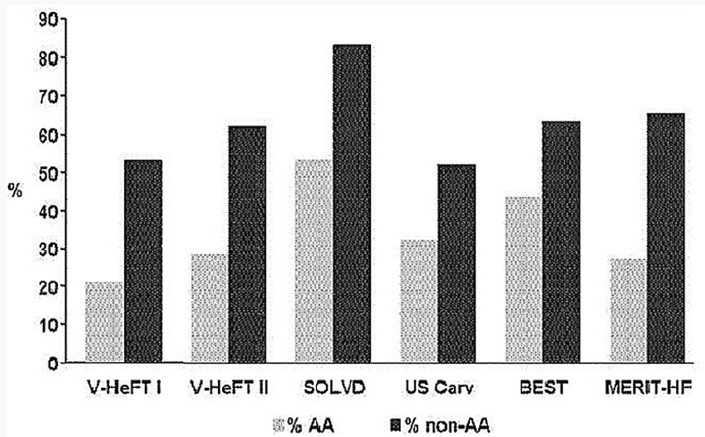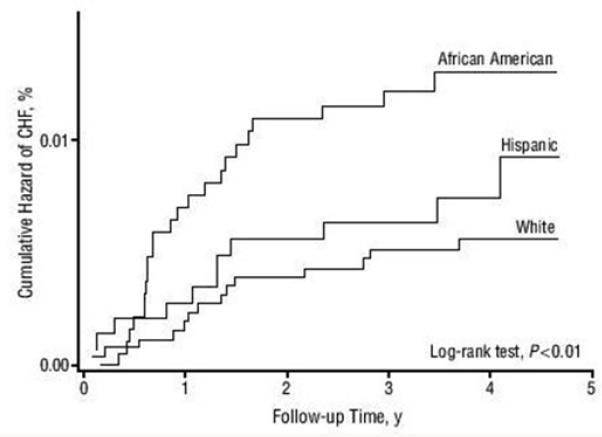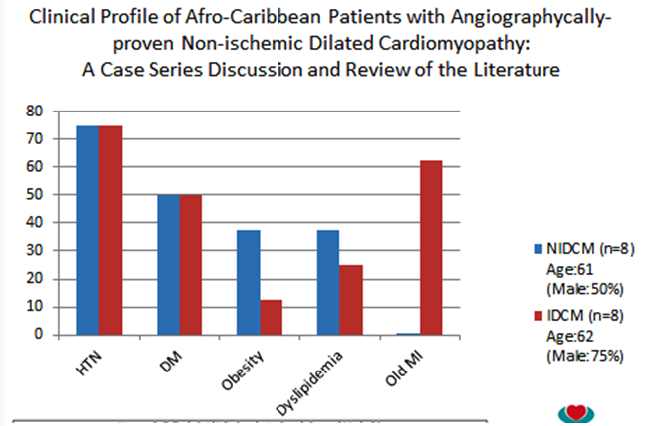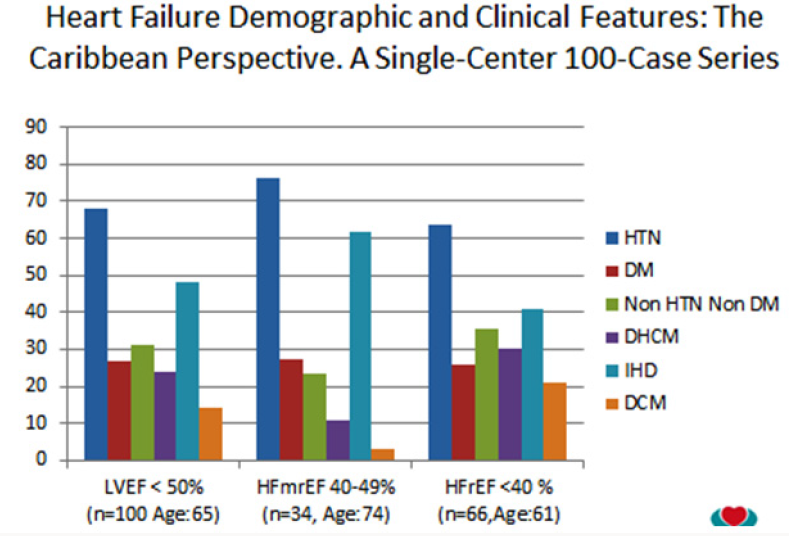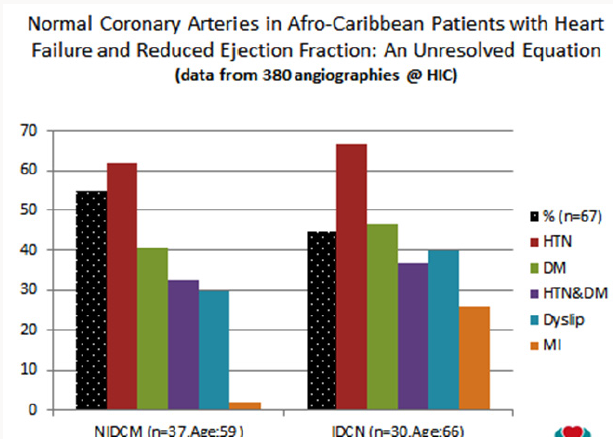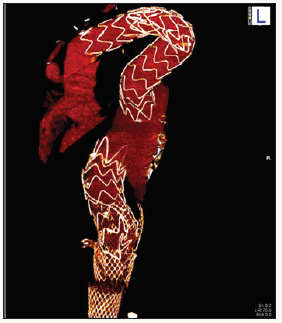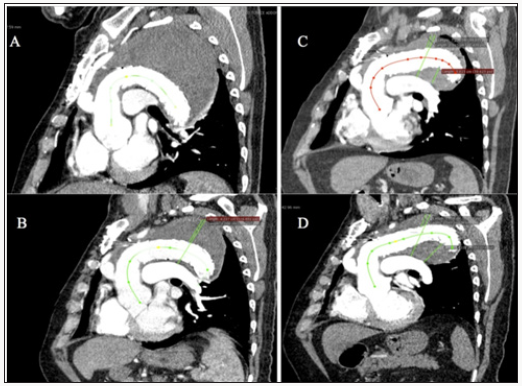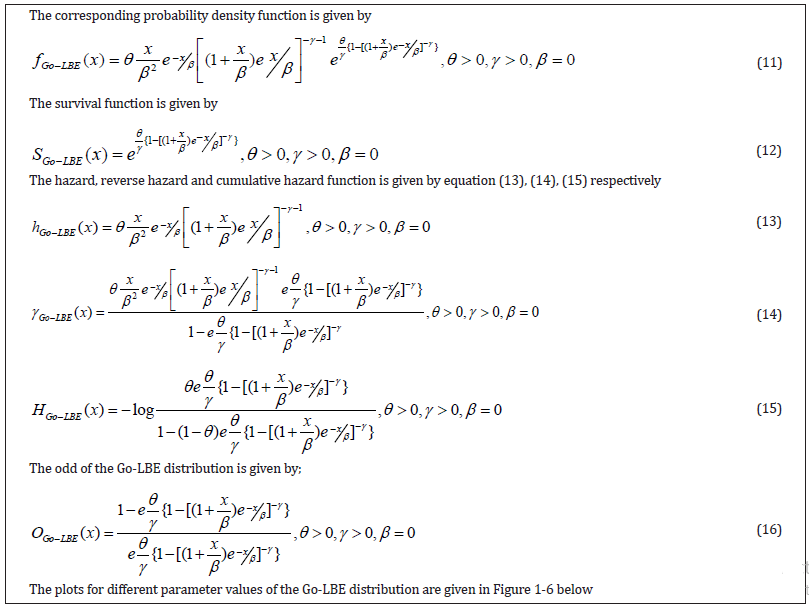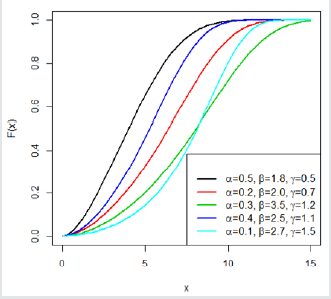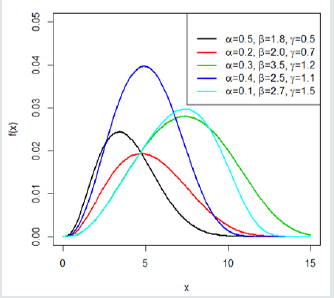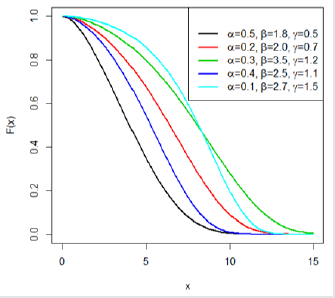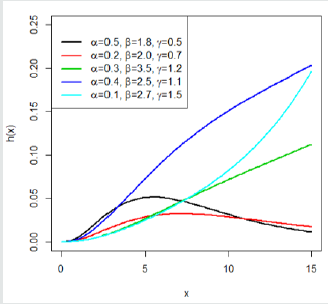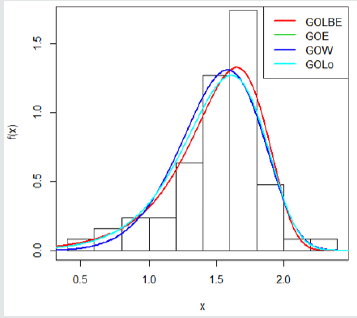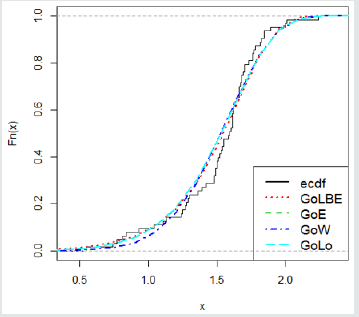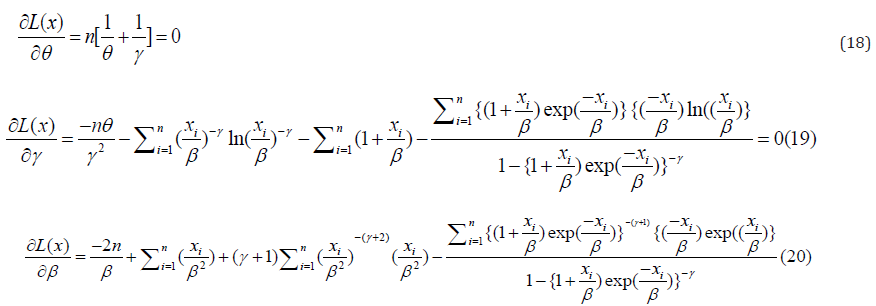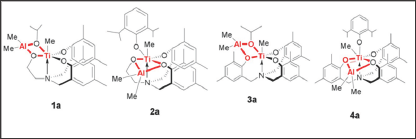Alcohol-related intimate partner violence (IPV) is a serious public
health issue which has attracted a lot of research and debates. While
some studies have reported the relationship between alcohol and IPV to
be linear, others have reported threshold effects. While some studies
have found the link to be strong, others have reported weak or no
association. Using Logistic regression and meta-analysis, the
relationship, strength of relationship and possible moderators of the
alcohol-IPV link are investigated in ten sub-Saharan African countries.
The results indicates that while alcohol consumption is associated with
IPV in three of the countries, alcohol abuse was associated with IPV in
the other seven countries lending support for both the linear and
threshold effects in sub-Saharan Africa. The meta-analysis showed a
strong association between alcohol and physical IPV while a weaker
association was observed for the alcohol- sexual IPV link. Moderator
analysis showed that the strength of the alcohol-IPV link in sub-Saharan
Africa varies with wealth index, marital length, and marital status,
and jealousy, place of residence and justification of the use of
violence. The nature of moderation was different between countries. The
results of this study can be applied to plan country specific and
multi-faceted intervention programs.
Keywords: Alcohol; Intimate Partners; Violence; Sub-Saharan Africa
Introduction
Intimate partner violence (IPV) is defined as any physical,
psy-chological or sexual harm that is caused by the actions of a present
or previous intimate partner [1]. It a major public health issue and
violates women's human rights [1]. Cross sectional studies have shown
that 10-69 per cent of women of reproductive age experience physical
violence at least once in their lifetime while 6-59% report an attempt
or actual sexual violence by their intimate partners [2]. Intimate
partner violence takes place in all backgrounds and among all
socioeconomic, religious and cultural groups with women bearing the
global burden [1]. Prevalent rates are different across countries with
rates between 11-52% in developing coun-tries [3]. IPV has been reported
to lead to physical injuries, loss of pregnancy and complications
during pregnancy [2]. It can also result in emotional problems such as
depression and suicide [2] and victims have been reported to resort to
use of drugs and alcohol as a means of coping with the abuse [4].
Several risk factors such as young age, low education, occu-pation,
experiencing parental violence, drug and alcohol use, con-trolling
behaviour by the husband [5], justification of wife beating [6] and so
on has been reported to increase the odds of IPV; of these, alcohol
consumption has been consistently implicated [2,7] with the prevalence
of alcohol-related IPV differing in diverse countries [2]. Although an
association between alcohol and IPV has been established in previous
studies, there are arguments on the role of alcohol in IPV, the effect
of alcohol and the strength of the association between alcohol and IPV.
Although alcohol-related IPV is a widely researched topic, only some
research has been done in sub-Saharan Africa [8,9] and none has
investigated the magnitude of the association across countries in
Sub-Saharan Africa. The aim of this study was to determine the type of
association between alcohol and IPV in sub-Saharan Africa and also
examine the strength of the relationship between alcohol and IPV in
Sub-Saharan Africa.
Methodology
For the quantitative study, secondary analysis and meta-analy-sis
were used to analyze cross-sectional data from the demographic and
health surveys of ten countries in sub-Saharan Africa (Burkina Faso,
Ghana, Kenya, Liberia, Malawi, Nigeria, Sao Tome and Prin-cipe,
Tanzania, Zambia and Zimbabwe). Since the aim of this re-search was to
determine the relationship between alcohol and IPV in sub-Saharan
Africa, a quantitative research design was adopted because it is an
appropriate method for showing associations and quantifying
relationships between variables [10]. In order to examine the
relationship and moderators of the alcohol-IPV link in sub-Saharan
Africa, a secondary analysis of previously conducted primary studies of
ten countries in sub-Saharan Africa was carried out. This is the method
of choice for this research as it takes a cross national perspective
which requires that data from several countries in sub-Saharan Africa be
analysed. Data sets for this study were also easier to access and raise
little or no ethical issues as re-spondents are already made anonymous.
Data Collection Methods
This study did not collect primary data but accessed data of the
demographic and health survey of ten sub-Saharan Africa countries
(Burkina Faso, Ghana, Kenya, Liberia, Malawi, Nigeria, Sao Tome and
Principe, Tanzania, Zambia and Zimbabwe). Large sample sizes were used
with high response rate thereby ensuring that statistically significant
relationships are detected. Access to the data sets was gained by
requesting permission from Demographic and Health Survey (DHS). Approval
from DHS was granted by email. Data was identified using the domestic
violence questionnaire. The identified data sets were downloaded to the
researcher's personal computer using SPSS (version 19) software.
Variables in the study were identified using the DHS recode manual.
Sample/Sampling Strategy
This study used quota sampling to identify DHS surveys con-ducted
between 2006 and 2011 made available by 2012 in sub-Sa-haran Africa. For
this research, only countries from sub-Saharan Af-rica were included
because the main independent variable (alcohol consumption) was not
measured in North African countries as con-sumption is prohibited. The
data for each country was the most re-cent. This was to ensure that
results reflected the current strength of the alcohol-IPV link and that
recommendations are made based on current evidence. All datasets
included asked questions on domestic violence and covered the topic of
alcohol consumption and frequency at which husband/partner gets drunk
because of the fact that the focus of this study is on alcohol-related
IPV.
Data Analysis
Data analysis was carried out using SPSS (version 19.0) and Revman Meta-analysis software.
Univariate Analysis: Frequencies were used to determine the prevalence of the different forms of IPV, alcohol consumption
and alcohol related IPV in the ten countries included in this study.
Logistic Regression: In order to determine the type of
relationship between alcohol and intimate partner violence in
sub-Saharan Africa, a logistic regression of the four category alcohol
measure was carried out by comparing non-drinkers to drinkers (drinkers
who never got drunk, who got drunk sometimes and those who got drunk
often). Results are reported as B (Standard Error), odd ratios (OR) and
95%CI for OR. A significant Wald test p-value indicates a significant
difference between the categories and non-drinkers.
Meta-Analysis: In order to investigate the strength of the
alcohol-IPV link in sub-Saharan Africa, a meta-analysis was car-ried out
using the Revman software. This was done by comparing non-abusers
(non-drinkers and drinkers who never got drunk) and abusers of alcohol
(husbands who got drunk sometimes and often). Based on the assumption
that effects may vary across samples and studies [11], random effects
model was used. The random effects model was used in this study because
of the heterogeneous nature of the studies and because this model
generates results that are generalisable to the sub-Saharan Africa
population. The heteroge-neity of the result was investigated using the
Cochran's Q test [12]. A significant I2 shows heterogeneity among
included studies with higher values indicating increased differences
within study [12]. Due to the high heterogeneity between countries
included in the meta-analysis, further moderation analysis was carried
out.
Hierarchical Logistic Regression: Using the method described
by Field [13], hierarchical logistic regression was used to study the
moderator effects of the independent variables on the al- cohol-IPV
link. In order to account for the complex sampling used in the DHS
survey, the probability of being administered the domestic violence
questionnaire and to adjust for the probability of non-re-sponse [14];
all analyses were conducted using the domestic violence sample weight.
Ethical Issues
One of the ethical issues with conducting a secondary data anal-ysis
is the permission to access datasets. Approval was sought by the
researcher and access was granted. The DHS also operate a no data
sharing policy. To ensure data protection, memory sticks and computers
were password protected to guard against unauthorised access. It is also
important to confirm that the data obtained from the primary study was
ethically obtained. The primary DHS study was done with the informed
consent of the subjects and confidenti-ality obtained with the National
ethics committees of the different countries approving the surveys.
Furthermore, the datasets have been made anonymous by removing all
identifier information.
Results
The study population consisted of women aged 15-49 years old and men
aged 15-59 years old in ten countries in sub-Saharan Af-rica. Six
hundred and eighty-two couples were interviewed in Sao
Tome and Principe, 873 in Tanzania and 883 in Ghana. The largest numbers
of 5566 couples were included in Nigeria while 3488 and 3051 couples
participated in Burkina Faso and Malawi respectively (Figure 1). Of
these numbers, the highest percentage of women were in the 25-29 years'
age group with this group accounting for 22.1% of the women in Burkina
Faso, 27% in Kenya, 25.8% in Malawi and 27.7% in Tanzania. For the men,
22.6%, 20.8%, 21.3% and 21.4% were in the 30-34 years' age group in
Kenya, Malawi, Zimbabwe and Zambia respectively. In Ghana (19.8%),
Liberia (21.5%) and Nigeria (19.8%), the highest proportion of the male
participants were in the 35-39 years’ age group (Figures 2a & 2b).
Figure 1: Number of Participants in the Study.
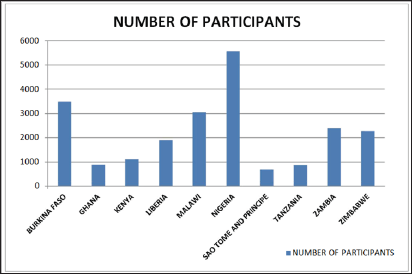
Figure 2a: Age group of the Women
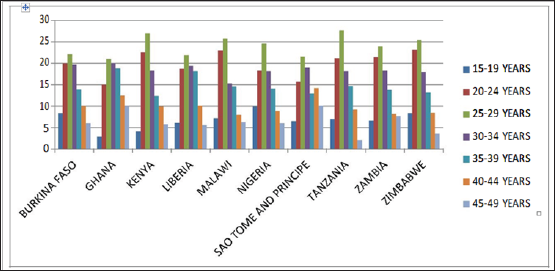
In Burkina Faso, 82.3% of the women had no education compared to
77.0% of the men. Zimbabwe and Sao Tome and Principe were found to have
the highest number of couple who have had any form of education with
94.2% of the women and 99.4% of the men having a primary, secondary or
higher education in Sao Tome and Principe. In Zimbabwe, only 2.7% of the
women and 1.2% of the men have had no education at all. 5.2% of the
women in Burkina Faso and 6.6% of the women in Tanzania reported having a
second-ary education compared to 41.5% and 62.1% in Ghana and Zimbabwe
respectively (Figures 3a & 3b).
Employment Status
Highest proportions of women who are unemployed were in Zimbabwe,
Kenya, Zambia and Malawi with 62.3%, 61.6%, 48.3% and 42.3% of the women
reporting that they have no paid employment respectively. The highest
number of women who were em-
ployed was reported in Ghana (88.5%), Tanzania (86%), Burkina Faso
(78.6%) and Nigeria (64.4%). For the men, the highest rate of
unemployment was in Zimbabwe (24.2%), Malawi (6.9%) and Liberia (6.3%)
(Figure 4). When wealth index was considered, Figures 5 show that 24.5%
and 22.3% of Nigerians in the study population were in the poorest and
poorer wealth indexes respectively. Kenya, Sao Tome and Ghana have the
highest percentages of 30.2%, 25.4% and 23.4% of the couples in the
richest wealth index while 21% of the couples in Burkina Faso, 21.4% in
Liberia, 21.9% in Malawi and 19.2% in Zambia were in the middle wealth
index.
Figure 2b: Age Group of the Men.

Figure 3A: Education Level of the Women.

Prevalence of Intimate Partner Violence
The prevalence of emotional IPV was lowest in Burkina Faso (10.8%)
and highest in Liberia (36.3%). In Ghana, 31.4% of the women reported
experiencing emotional IPV while 32.3% reported same in Burkina Faso.
The percentage of emotional IPV is closest in Sao Tome and Principe and
Zimbabwe with 25% of the women reporting emotional IPV in Sao Tome and
Principe and 25.2% in Zimbabwe. The percentage of women who reported
sexual IPV ranged from as low as 1.2% in Burkina Faso to as high as
15.8% in Zimbabwe. Figures in Zambia and Malawi are closest to Zimbabwe
with 15.6% of the women in Zambia and 15.4% of the women in the study
population experiencing sexual violence from their husbands or partners.
Zambian women reported the highest prevalence of physical IPV (44.9%)
while the lowest percentage of reported physical IPV was 11.5% in
Burkina Faso.
Figure 3b: Education Level of the Men.
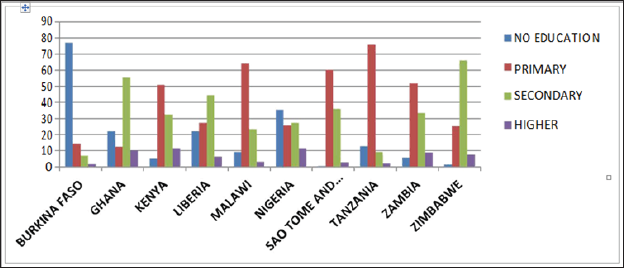
Figure 4: Employment Rate.
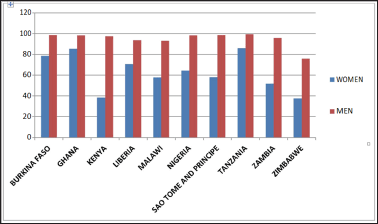
Figure 5: Wealth Index of Participants in the Study.
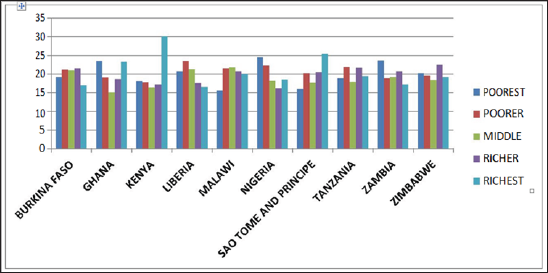
In Kenya and Liberia, 32% and 35% of the women reported physical IPV.
When all three forms of IPV were considered, prevalence rate was
highest in Zambia (51.9%) followed by Liberia (50.3%) and lowest in
Burkina Faso (16.7%). In general, the prevalence of physical and
emotional IPV were higher than that of sexual IPV indicating that women
are less likely to experience or report sexual IPV in sub-Saharan Africa
(Figure 6).
Figure 6: Prevalence of Intimate Partner Violence in sub -Saharan Africa.
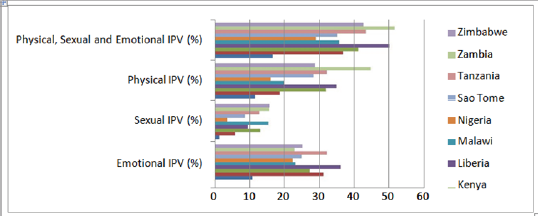
Prevalence of Alcohol-Related Intimate Partner Violence
Figure 7: Prevalence of Intimate Partner Violence in sub -Saharan Africa.
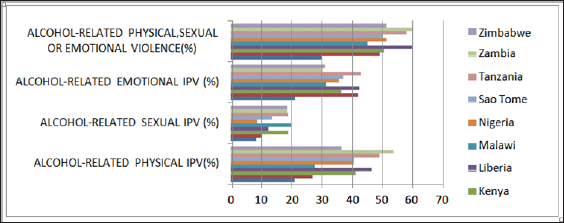
Figure 7 shows the prevalence of alcohol-related intimate part-ner
violence among married and cohabiting women in sub-Saharan Africa. The
prevalence of alcohol related physical IPV was between 21.2 to 53.9% in
this study. The highest prevalence rate of alcohol-related sexual
violence was 19.9% in Malawi while the lowest prevalence of 8.8% was
reported in Nigeria. The prevalence of alcohol-related emotional IPV
ranged from 21.3% in Burkina Faso to 43.1% in Tanzania. When all three
forms of IPV were considered, prevalence rates ranged from as 16.7% in
Burkina Faso to as high as 51.9% in Zambia.
Relationship between Alcohol and Intimate Partner Vi-olence
The relationship between alcohol and intimate partner violence was
investigated by conducting a logistic regression of intimate partner
violence (physical, sexual or emotional IPV) and the four level drinking
variables. The significance of the effect of each level of the drinking
variable on IPV was assessed using the Wald's test. Odd ratios (Exp B)
with the 95% confidence intervals, standard error and Wald's test p
values are presented. In Burkina Faso, the odds of women experiencing
any form of IPV (physical, sexual or emotional IPV) is 1.7 times higher
in women whose husbands never got drunk than in women whose husbands
never drink while the odds of experiencing IPV is 2.23 (1.66-3.00) and
2.77 (1.82-4.21) greater in women whose husbands never got drunk
compared to women whose husbands never drink in Nigeria and Sao Tome and
Principe respectively. The Wald’s test shows that there is a
significant difference in the odds of experiencing IPV by women whose
husbands drink but never got drunk and women whose husbands never drink.
The results show that in Burkina Faso, Nigeria and Sao
Tome and Principe, alcohol consumption rather than alcohol abuse is
associated with intimate partner violence indicating that there is a
linear relationship between alcohol and IPV in these countries.
In Ghana, the odd of perpetrating intimate partner violence is 2.29
(1.66-3.16) in men who got drunk sometimes and 3.36 (2.04-5.54) in men
who got drunk often compared to non-drinkers. While the OR for
experience of intimate partner violence is 7.12 (4.3011.81) in women
whose husbands often abuse alcohol in Kenya, the OR for IPV by women
whose husbands often get drunk is 2.72 (1.81-4.08) in Liberia. In
Malawi, husbands/partners who get
drunk sometimes are 1.45 times more likely to abuse their partners
compared to men husbands or partners who do not drink alcohol while the
odds of perpetrating IPV is 4 times higher in husbands who get drunk
often. Wald's test p values showed that there is no significant
difference in the odds of women experiencing intimate partner violence
in women whose husbands drink but never got drunk and women whose
husbands never drink in Ghana, Kenya, Liberia, Malawi, Tanzania, Zambia
and Zimbabwe. This indicates that it is alcohol abuse rather than
drinking of alcohol that is associated with intimate partner violence.
These full results are presented in Table 1 below.
Table 1: The effect of alcohol on intimate partner violence in sub
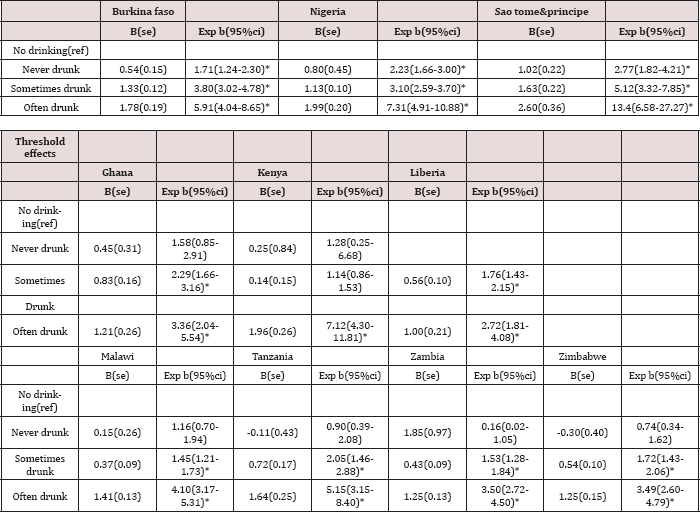
The Strength of the Alcohol-Intimate Partner Violence Link in sub-Saharan
a. Effect of Alcohol on Physical Intimate Partner Violence
Figure 8 showed the result of the meta-analysis to determine the
strength of the alcohol-physical intimate partner violence in ten
sub-Saharan Africa countries. A total of 22,120 participants were used
in the study. Of these numbers, 6,271 were in the group of women whose
husbands drink abuse alcohol while 15,849 were in the group of were in
the group of women whose husbands/partners do not abuse alcohol. While
2,576 women reported experiencing physical intimate partner violence in
the first group, a total of 2,698 women reported physical IPV in the
other group. The results show the test for heterogeneity, I2=93%
indicating a high degree of heterogeneity between the ten countries
included in the analysis. The odds ratio is 2.91 (95% CI (2.24-3.79)
showing that there is a strong association between alcohol and physical
intimate partner violence in sub-Saharan Africa. The overall effect Z
=7.96 and was statistically significant (p<0.00001). This indicates
that the strength of the alcohol-physical IPV link is strong in
sub-Saharan Africa.
Figure 8: Effect of Alcohol on Physical IPV in SSA.
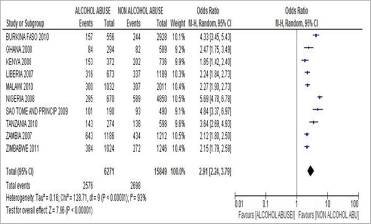
b. Effect of Alcohol on Sexual Intimate Partner Violence
The meta-analysis to determine the effect of alcohol on sexual IPV is
presented in Figure 9. A total of 22,104 women were included in the
study. 6,266 were in the alcohol abuse group while 15,838 were in the
non- alcohol abuse group. Of the 6,266 women in the alcohol abuse group,
971 reported experiencing sexual IPV while 1,006 reported sexual IPV in
the non-alcohol abuse group. The above results show an I2 value of 70%
indicating heterogeneity between studies. An OR of 2.15
(95%CI=1.78-2.60) means that women in sub-Saharan Africa are two times
more likely to report sexual violence when their husbands/partners abuse
alcohol than when they do not. An odd ratio of 2.15 shows that there is
a small effect size for the alcohol-sexual violence link in sub-Saharan
Africa. The overall effect Z=7.87 (0.00001) is highly significant
indicating that the effect of alcohol on IPV is highly significant.
These results imply that the strength of the alcohol-sexual IPV link is
weak in sub-Saharan Africa.
Figure 9: Effect of Alcohol on Sexual Intimate Partner Violence in sub-Saharan Africa.
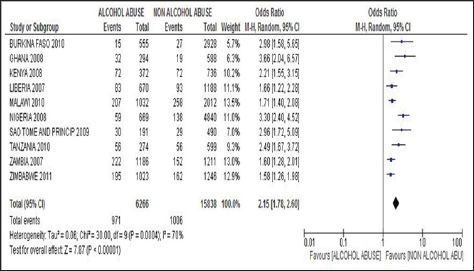
c. Effect of Alcohol on Emotional Intimate Partner Violence
A total of 22,112 respondents took part in the study to deter-mine
the effect of alcohol on emotional intimate partner violence. A total of
5,151 participants reported experiencing emotional intimate partner
violence. Of this number, 2,182 reported that their husbands abuse
alcohol while 2,969 reported that their husbands never abuse alcohol.
The result of the meta-analysis is presented in Figure 10 below. The
results above show that women whose husbands abuse alcohol are 2.36
times more likely to report emotional intimate partner violence in
sub-Saharan Africa OR=2.36 (95%1.96-2.83). This means that there is a
moderate effect size for the association between alcohol and emotional
intimate partner violence in sub-Saharan Africa. An I2 value of 85%
indicates high heterogeneity between studies. The overall effect Z was
highly significant (Z=9.15, p<0.00001)
Discussion
Prevalence of Intimate Partner Violence in SSA
In this study, the prevalence of physical intimate partner violence
is 44.9% in Zambia, 28.9% in Zimbabwe and 19.9% in Mala
wi. These values are similar to the 45%, 28% and 20% reported by Hindin
et al. [15] for Zambia, Zimbabwe and Malawi respectively. On the other
hand, the 32% and 32.2% prevalence rates reported for Kenya and Tanzania
herein are lower than the 39% reported by Hindin et al. [15] and the
48% observed by Tumwesigye et al. [16] for Uganda which is a neighboring
East African country. The percentage of physical IPV in other countries
in this study ranged from between 11.5% in Burkina Faso to 28.5% in Sao
Tome and Principe.
While some of these rates are similar to figures reported in other
sub-Saharan African countries, others are less. For instance, the 28.5%
prevalence reported here is similar to the 29% reported for Rwanda [15].
However, the 11.5% reported for Burkina Faso is lower than rates
reported anywhere in sub-Saharan Africa but similar to the 12% reported
for Haiti [3]. These differences in prevalence rates may be as a result
of the questions used to assess physical IPV.
Figure 10: Effect of Alcohol on Emotional Intimate Partner Violence in SSA.
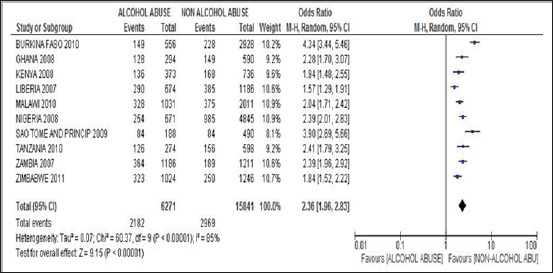
This study asked respondents whether husband/partner has ever
threatened or attacked them with a gun/knife or other weapons while the
Hindin et al. [15] separated this question into threat and actual
attack. Combining these two questions would mean that women who have
experienced both threat and the act can only give one response to both
questions leading to the lower rates obtained in this study. In this
study, 16.1% of women in Nigeria re-ported physical IPV. This is
slightly higher than the 15% reported by Antai et al. [17] using the
same study data. While the Antai et al. [17] study used the individual
recode which is a sample of legally married women, the present study
used a sample of currently married/cohabiting women. This is consistent
with findings that the prevalence of IPV is higher in currently married
than legally married women [15]. In spite of these observed differences
in the prevalence of physical IPV in some sub-Saharan African countries
in this study, the observed prevalence of 11.5 to 44.9% in this study is
consistent with that reported in other studies [2,3,16-18].
Apart from physical IPV, the prevalence of sexual and emotion-al IPV
was also examined. Results indicated that the rates of sexual IPV ranged
from 1.2% in Burkina Faso to 15.8% in Zimbabwe. These rates are similar
to the 3 to 16% prevalence rates reported in existing literatures for
sub-Saharan Africa [15,17]. The prevalence of emotional IPV in this
study ranged from 10.8% in Burkina Faso to 36.3% in Liberia. This is
higher than the prevalence rates of 10.4 to 22.7% reported elsewhere
[19]. When all three forms of IPV were considered, the prevalence rates
increased for all ten countries and were higher than that reported in
previous studies. For example, Hindin et al. [15] reported a prevalence
of 45% for Zambia in their studies while this study shows a prevalence
of 51.9% for Zambia when all forms of IPV were considered. It can thus
be argued that studies investigating only one form of IPV result in an
under estimation of the magnitude of IPV. Overall, the prevalence of
sexual violence in this study was consistently lower than that reported
for physical and emotional violence across all countries included in
this work.
Prevalence of Alcohol-Related Intimate Partner Violence
The prevalence of alcohol IPV was between 29.9% to 60.1% when of
physical, sexual or emotional IPV is considered. These rates are higher
than the 33.9 to 49.5% reported for countries in sub-Saharan Africa
[15,16] and 10.5 to 55% reported elsewhere [2]. However, this is lower
than the 65% rate reported in South Africa [2]. The higher rates
reported in this study is as a result of the fact that this study
investigated the experience of all three forms of IPV indicating that
previous studies may have been subject to an under reporting of
prevalence rates of IPV as only physical or sexual IPV are usually
investigated. The lower prevalence of alcohol-related IPV in this study
compared to the 65% prevalence reported in South Africa can be explained
by the fact that while the present study investigated the prevalence of
women ever experiencing alcohol-related IPV, the South African study
reported prevalence for the past twelve months.
Following the same trend as IPV, it is possible that the occur-rence
of current alcohol-related violence may be higher than past occurrence.
Women who have experienced alcohol-related violence may recall these
incidents more since they are more recent than if they took place a long
time ago. Another possible explanation for this is that in South
Africa, it is believed that alcohol causes aggres-sion and this has led
men to drink in order to carry out violent acts [2] thereby increasing
the rate of alcohol-related violence in South Africa compared to other
sub-Saharan African countries.
The Relationship between Alcohol and Intimate Partner Violence in SSA
In all ten countries, alcohol was consistently linked to women's
experience of intimate partner violence with the nature of the
re-lationship varying across different countries. The findings of this
study showed that in seven out of the eleven countries (Ghana, Ken-ya,
Liberia, Malawi, Tanzania, Zambia and Zimbabwe), there was no
significant difference in the odds of experiencing IPV in women whose
husbands/partners never consumed alcohol and those whose
husbands/partners never got drunk. This is consistent with the findings
in several literatures [2,3,16]. This can be explained by the fact that
for alcohol to significantly increase the odds of perpetrating intimate
partner violence, alcohol consumption has to surpass a particular amount
or rate of consumption.
This explanation is consistent with that put forward by propo-nents
of the threshold effect who argue that it is not alcohol con-sumption
per se that contributes to intimate partner violence but alcohol abuse.
Conversely, in Burkina Faso, Nigeria and Sao Tome and Principe, women
whose husbands consumed alcohol but never got drunk were significantly
more likely to experience any of physical, sexual or emotional intimate
partner violence than women whose husbands never consumed alcohol. This
is similar to the report of Bangdiwala et al. [20] who reported a strong
linear re-lationship for the alcohol-IPV link. These results are in
agreement with the justification put forward by the proponents of the
linear effect conceptualization who maintain that alcohol abuse
increases the odds of intimate partner violence and that these odds
increases with increase in the quantity of alcohol consumed.
In Kenya alone, the odds of alcohol increasing the odds of in-timate
partner violence only reached statistical significance in the women
whose husbands/partners often got drunk. This indicates that in Kenya,
it is the frequency of alcohol abuse and not abuse alone that
contributes to the alcohol-IPV link. Drawing from the multiple threshold
conceptualisation [21], it is possible that the likelihood of
experiencing intimate partner violence in Kenya is already very high
that alcohol consumption or less frequent alcohol abuse does not
significantly contribute to an increased odd of intimate partner
violence while more frequent alcohol abuse may increase the frequency
and severity of intimate partner violence in this sample thereby
increasing the likelihood of intimate partner violence in this group.
The findings of this study support both the linear and threshold
conceptualisation of the alcohol-IPV link. This suggests that the type
of relationship between alcohol and intimate partner violence varies
across countries in sub-Saharan Africa with most countries showing a
threshold effect. This observed difference could be as a result of
differences in drinking pattern. In the seven countries where threshold
effects were observed, large percentages (86.3 to 99.1%) of men who
drink get drunken showing drinking cultures that are supportive of
alcohol abuse.
Strength of Alcohol-Intimate Partner Violence Link in SSA
A meta-analysis of the ten countries included in this study showed an
odds ratio of 2.91 (95%CI, 2.24-3.39) for physical IPV which shows that
women whose husbands abuse alcohol are almost thrice as likely to
experience IPV than women whose husbands do not abuse alcohol. This
shows a strong association between alcohol and intimate partner violence
in sub-Saharan Africa. This is consistent with the strong association
reported in a meta-analysis by Gil-Gonzalez et al. [22]. The strong
association between alcohol and physical IPV in this study can be
explained by the culture of masculinity in sub-Saharan Africa. It is
considered masculine for men to drink and it is also seen as a thing of
pride for a man to be feared and respected by his wife. It is also
generally acceptable for men to physically reprimand their wives if they
feel that the women have erred in anyway.
On the other hand, a small but significant relationship was observed
for alcohol and sexual intimate partner violence in this study. This is
similar to the report of Tang and Lai [23] who report-ed a significant
but weak association between alcohol abuse and sexual intimate partner
violence. This weak association could be as a result of the fact that in
African society, sex is considered a private matter not to be discussed
with strangers. There is also shame as-sociated with being raped and
made to perform unwanted sexual acts and women are often blamed for it
and this may result in under reporting. Women may also consider that
being made to perform any form of sexual act is acceptable so long as it
is within a marriage or committed relationship and may not consider
this as IPV. For example, it is commonly believed in Africa that a man
cannot rape his wife. Hence forced sexual intercourse in a marriage is
not considered rape but seen as a normal part of the relationship. When
the severity of intimate partner. Based on the results from this
re-search, it can be argued that the strength of the alcohol-IPV link in
sub-Saharan Africa depends on the type of IPV measured.
Conclusion
The purpose of this research work is to identify the relationship,
strength of relationship between alcohol and intimate partner violence
in sub-Saharan Africa. Results of this study show that alcohol is
consistently associated with intimate partner violence in all ten
countries included in this study with the strength of this relationship
depending on the form of intimate partner violence. While a linear
relationship was found between alcohol and intimate partner violence in
Burkina Faso, Nigeria and Sao Tome and Principe, a threshold effect was
observed in the remaining seven countries with the odds of
alcohol-related intimate partner violence increasing with increase in
alcohol consumption and alcohol abuse. The strength of the
alcohol-intimate partner violence link was also found to be dependent on
the effects of other variables in some countries with the direction of
moderation different in the countries where these moderation effects are
present.
The results also show that when the three forms of IPV were measured,
the prevalence of both IPV and alcohol-related IPV were higher than
that of existing literatures suggesting that studies of IPV estimating
only one or two forms of IPV are subject to under es-timation of the
magnitude of his huge public health problem. These findings have
potentially important implications for public health promotion, policy
and practice. The implication of the findings of this research is that
interventions for tackling alcohol-related IPV should be multifaceted
and should address behavioural, cultural and social change
Study Limitations
Despite the above strengths, the result of this study should be
interpreted bearing in mind several limitations. First, because the
information on problem drinking was provided by women, there is the
possibility of misclassification bias. Responses were not taken from men
about their drinking and IPV perpetration and this would have been
valuable in corroborating the women report. There is also a tendency for
recall bias as IPV may have taken place at a different time from
alcohol abuse. Classification of drinking as sometimes or often drunk
makes the report subjective rather than objective and may have led to
results showing a stronger relationship between alcohol and IPV in
sub-Saharan Africa. This is because studies have shown that studies
assessing alcohol abuse is more associated with IPV than those measuring
quantities [24].
Even though the results of this research are to a great extent
consistent with those reported for community samples in other studies,
it cannot be generalised to clinical samples of alcohol abusers or IPV
perpetrators because studies have shown that the magnitude of the
association between alcohol and IPV is stronger in clinical than
community samples [24]. Finally, because this study analysed data from
cross sectional studies which are ecological in nature, it is difficult
to know if problem drinking took place before IPV or vice versa. It is
possible that perpetrators of IPV are more likely to misuse alcohol or
that individual's use alcohol to cope with stressful life events hence
causality cannot be assumed.
Read More about Lupine Publishers Journal of Research & Reviews Please Click on below Link:
https://lupine-publishers-research.blogspot.com/


